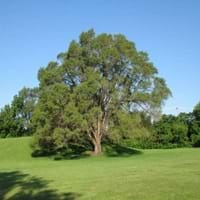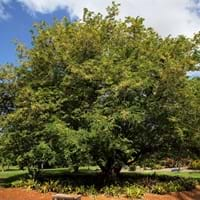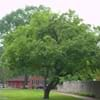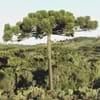Life Span
Perennial
Perennial
Origin
Asia
Africa, India, Southeast Asia
Types
Not Available
Sweet Tamarind, Australian tamarind, Manila tamarind, Velvet tamarind, Spanish Tamarind
Habitat
Woodland Garden Canopy
Subtropical climates, Tropical regions
USDA Hardiness Zone
2-9
9-11
AHS Heat Zone
9-1
Not Available
Sunset Zone
A1, A2, A3, 1a, 1b, 2a, 2b, 3a, 3b, 4, 5, 6, 7, 8, 9, 10, 11, 14, 15, 16, 17, 18, 19, 20, 21
Not Available
Habit
Upright/Erect
Spreading
Minimum Height
Not Available
Minimum Width
Not Available
Flower Color
Not Available
Red, Yellow
Flower Color Modifier
Bicolor
Bicolor
Fruit Color
Green, Tan
Brown
Leaf Color in Spring
Dark Green
Green
Leaf Color in Summer
Dark Green
Dark Green, Green
Leaf Color in Fall
Dark Green
Dark Green, Yellow green
Leaf Color in Winter
Not Available
Dark Brown, Green
Leaf Shape
Elliptic
Pinnate
Plant Season
Summer
Spring, Summer, Fall, Winter
Sunlight
Full Sun
Full Sun, Partial Sun
Growth Rate
Very Fast
Slow
Type of Soil
Clay, Loam, Sand
Clay, Loam, Sand
The pH of Soil
Acidic, Neutral, Alkaline
Acidic
Soil Drainage
Average
Average
Bloom Time
Spring
Late Spring
Tolerances
Pollution, Drought
Drought, Salt
Where to Plant?
Ground
Ground
How to Plant?
Seedlings
Layering, Seedlings, Transplanting
Plant Maintenance
Medium
Low
Watering Requirements
Do Not over Water, Needs watering once a week
Do Not over Water, Keep the ground moist but not water-logged
In Summer
Lots of watering
Lots of watering
In Spring
Moderate
Moderate
In Winter
Average Water
Average Water
Soil pH
Acidic, Neutral, Alkaline
Acidic
Soil Type
Clay, Loam, Sand
Clay, Loam, Sand
Soil Drainage Capacity
Average
Average
Sun Exposure
Full Sun
Full Sun, Partial Sun
Pruning
Remove diseased branches by the tool's blades dipped into the alcohol solution
Remove damaged leaves, Remove dead branches, Remove dead leaves
Fertilizers
20-5-10 fertilizer
6-6-6 or 8-8-8
Pests and Diseases
Aphids, Leaf spot, Powdery mildew
Aphids, Borers, Mealybugs, Onion thrips, Root weevil, Soft scales, Whiteflies
Plant Tolerance
Drought
Drought
Flowers
Insignificant
Showy
Flower Petal Number
Not Available
Single
Foliage Texture
Medium
Bold
Foliage Sheen
Matte
Matte
Attracts
Insects, Not Available
Beetles, Birds, Scale Insects
Allergy
Mild Allergen
Diarrhea, Hives, Nausea, Vomiting
Aesthetic Uses
Bonsai
Beautification
Beauty Benefits
Not Available
Glowing Skin, Good for skin, Improve skin tone, Reduces ageing, Skin cleanser
Environmental Uses
Air purification
Food for animals, Food for birds, Food for insects, Nesting sites for birds
Medicinal Uses
Antibilious, Antidote, Demulcent, Diuretic, Febrifuge, Poultice
Antioxidants, Inflammation, Rheumatism, Skin Disorders, Sore throat
Part of Plant Used
Fruits, Inner Bark, Leaves
Flowers, Fruits, Leaves
Other Uses
Inner bark can be dried and made into noodles, Sauces, Sometimes used for making wine, Used as a potherb, Wood used for boat making
Culinary use, Used as a nutritious food item, Used as Ornamental plant, Used for its medicinal properties
Used As Indoor Plant
No
No
Used As Outdoor Plant
Yes
Yes
Garden Design
Shade Trees
Edible, Fruit / Fruit Tree, Shade Trees
Botanical Name
ULMUS pumila
Tamarindus indica
Common Name
Siberian Elm
Tamarind tree, Tamarind
In Hindi
Siberian Elm
इमली का पेड़
In German
Siberian Elm
Tamarinde
In French
Siberian Elm
tamarinier
In Spanish
Siberiano Elm
tamarindo
In Greek
Σιβηρίας Elm
δέντρο Tamarind
In Portuguese
Siberian Elm
tamarindo
In Polish
Siberian Elm
drzewo tamaryndowca
In Latin
Siberian Elm
tamarind ligno
Phylum
Magnoliophyta
Magnoliophyta
Class
Magnoliopsida
Magnoliopsida
Clade
Angiosperms, Eudicots, Rosids
Angiosperms, Eudicots, Rosids
Tribe
Not Available
Detarieae
Subfamily
Not Available
Caesalpinioideae
Number of Species
Not Available
Not Available
Season and Care of Siberian Elm and Tamarind tree
Season and care of Siberian Elm and Tamarind tree is important to know. While considering everything about Siberian Elm and Tamarind tree Care, growing season is an essential factor. Siberian Elm season is Summer and Tamarind tree season is Summer. The type of soil for Siberian Elm is Clay, Loam, Sand and for Tamarind tree is Clay, Loam, Sand while the PH of soil for Siberian Elm is Acidic, Neutral, Alkaline and for Tamarind tree is Acidic.
Siberian Elm and Tamarind tree Physical Information
Siberian Elm and Tamarind tree physical information is very important for comparison. Siberian Elm height is Not Available and width Not Available whereas Tamarind tree height is 1,800.00 cm and width 800.00 cm. The color specification of Siberian Elm and Tamarind tree are as follows:
Siberian Elm flower color: Not Available
Siberian Elm leaf color: Dark Green
Tamarind tree flower color: Red and Yellow
- Tamarind tree leaf color: Green
Care of Siberian Elm and Tamarind tree
Care of Siberian Elm and Tamarind tree include pruning, fertilizers, watering etc. Siberian Elm pruning is done Remove diseased branches by the tool's blades dipped into the alcohol solution and Tamarind tree pruning is done Remove damaged leaves, Remove dead branches and Remove dead leaves. In summer Siberian Elm needs Lots of watering and in winter, it needs Average Water. Whereas, in summer Tamarind tree needs Lots of watering and in winter, it needs Average Water.





